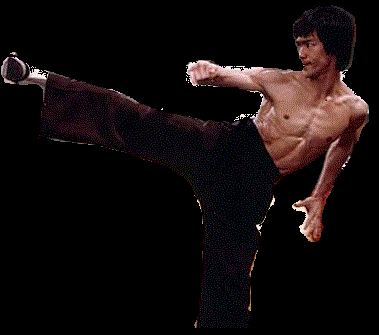
Pencak Silat
Pencak silar (Indonesian pronunciation: [ˈpɛntʃaʔ ˈsilat]; sometimes spelled penchak silat or pentjak silat in Western writings) is an umbrella term for the martial arts of Indonesia. The leading organization of pencak silat in Indonesia is IPSI (Ikatan Pencak Silat Indonesia, meaning Pencak Silat Association of Indonesia). The liaison body for international pencak silat is the International Pencak Silat Association or PERSILAT (Persekutuan Pencak Silat Antara Bangsa).
Etymology:
Although the word silat is widely known through much of South East Asia, the term pencak silat is specifically used in Indonesia. Pencak silat was chosen in 1948 as a unifying term for the Indonesian fighting styles. It was a compound of the two most commonly used words for martial arts in Indonesia. Pencak was the term used in central and east Java, while silat was used in Sumatra and Borneo. In modern usage, pencak and silat are seen as being two aspects of the same practice. Pencak is the performance aspects of the martial art, while silat is the essence of the fighting and self-defense. It is often said by practitioners that there can be no silat without pencak, on the other hand pencak without silat skills is purposeless.

History:
The pencak silat tradition is mostly oral, having been passed down almost entirely by word of mouth. In the absence of written records, much of its history is known only through myth and archaeological evidence. The earliest fighting arts in Indonesia can be traced back to prehistoric tribes. The primary weapons of Indonesia's tribal peoples were the single-edge sword, shield and javelin. The inhabitants of Nias Island had until the 20th century remained largely untouched by the outside world, however, they are culturally similar to the Himalayan Naga tribe. NeighbouringSumatrans are said to have left the Nias people alone because they were fearless warriors.
The combative measures as artifacts of silat roots, evolved around the 7th century A.D. Bas-reliefs in Srivijaya depict warriors wielding such weapons as the jian or Chinese straight sword, which is still used in some styles today. Additionally,Javanese blades are of Indian derivation. The earliest evidence of silat being taught in a structured manner comes from the Sumatra-based empire of Srivijaya where folklore tells that it was created by a woman named Rama Sukana who witnessed a fight between a tiger and a large bird. By using the animals' movements, she was able to fend off a group of drunken men that attacked her. She then taught the techniques to her husband Rama Isruna from whom they were formally passed down. There are several variations of this story depending on the region where it is told. On the island of Boyan (Bawean), Rama Sukana is believed to have watched monkeys fighting each other while the Sundanese of West Java believe that she created the cimande style after seeing a monkey battle a tiger. The accuracy of this legend cannot be substantiated but the fact that silat is attributed to a woman is thought to indicate its age, considering the prominence of women in traditional Southeast Asian society.
While Srivijaya dominated the coastal areas, the Sailendra and Medang Kingdoms ruled central Java where the fighting arts developed in three geographical regions: West Java, Central Java, and East Java. Pencak silat especially flourished in Javawhich is now home to more different styles than any other Indonesian islands. In the 13th century, Srivijaya was defeated by the Cholas of south India. This was followed by the decline of the Sailendra and Sanjaya kingdoms but it also gave rise to the Majapahit empire. This was the first empire to unite all of Indonesia's major islands, and Javanese silat reached its peak under Majapahit. The influence of silat from the mainland was consolidated by Ninik Dato' Suri Diraja (1097–1198) to createsilek or Minangkabau silat in Sumatra.
Pencak silat later evolved openly along with the process of East Indies independence (formerly of Indonesia), the noble man inherited by his blood line and the people united against Dutch colonialism. During this time the Bugis and Makassarpeople from south Sulawesi were very well known as expert sailors, navigators and warriors. After Indonesia's independence, pencak silat was influenced by social, culture, religious, and sport context up to its modern formulation. It was eventually brought to Europe by Indo people of Eurasian (mixed Indonesian and European) ancestry, such as the well known Paatje Phefferkorn.



